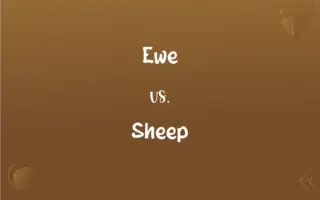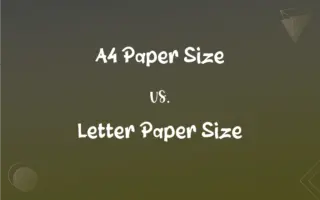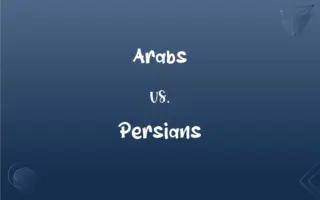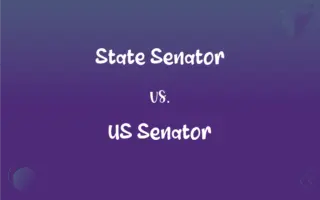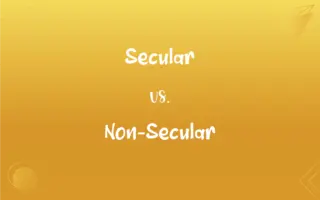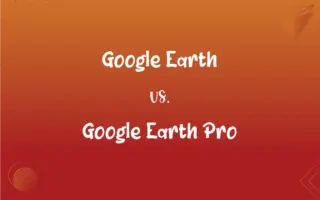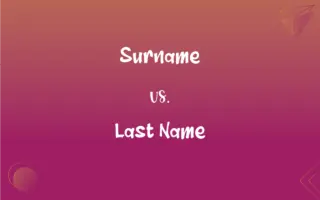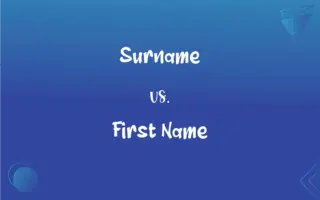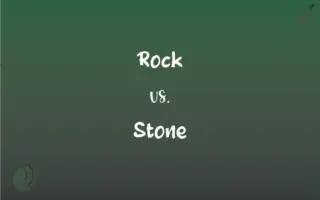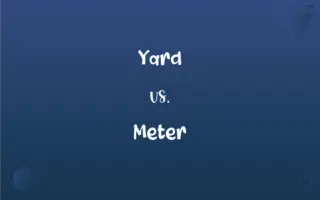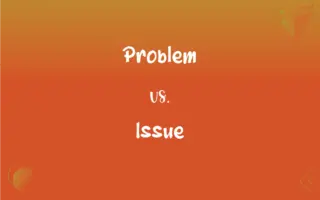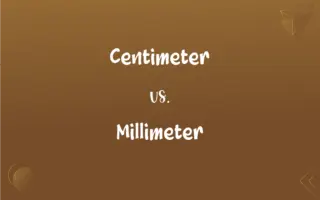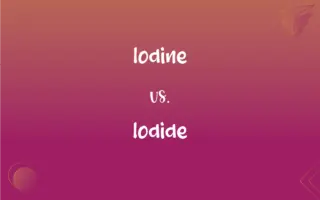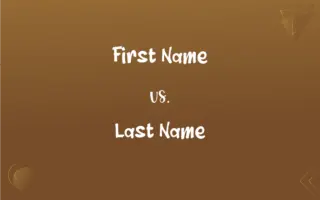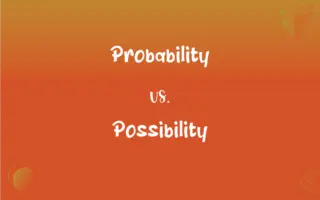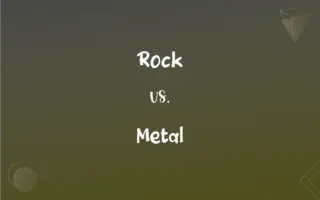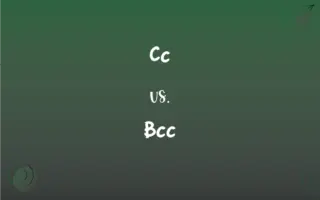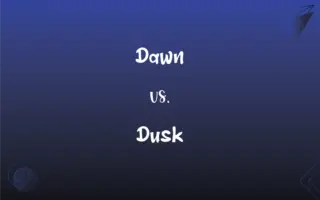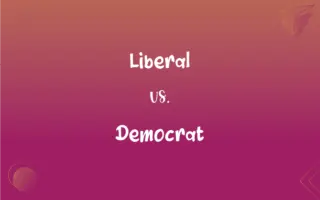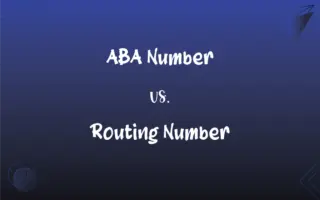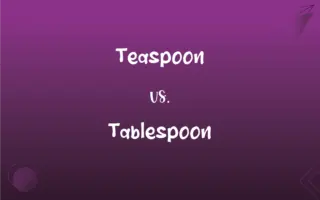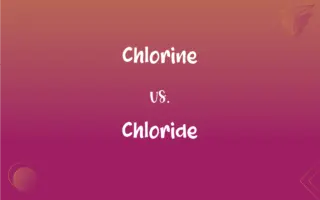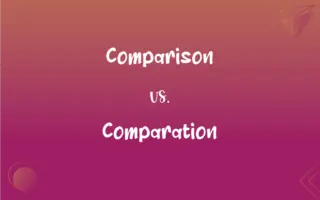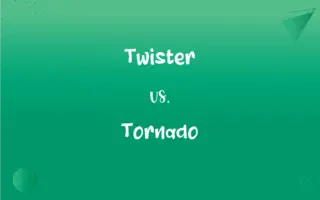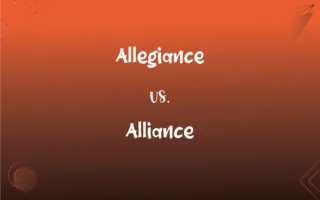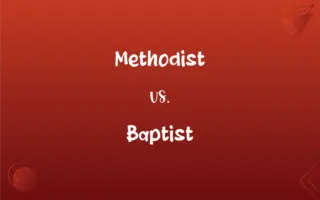Anime vs. Cartoon: What's the Difference?
Edited by Aimie Carlson || By Harlon Moss || Updated on October 12, 2023
Anime is Japanese-styled animation with diverse art, themes, and vibrant characters; cartoons are typically Western, often with exaggerated features and aimed primarily at children.
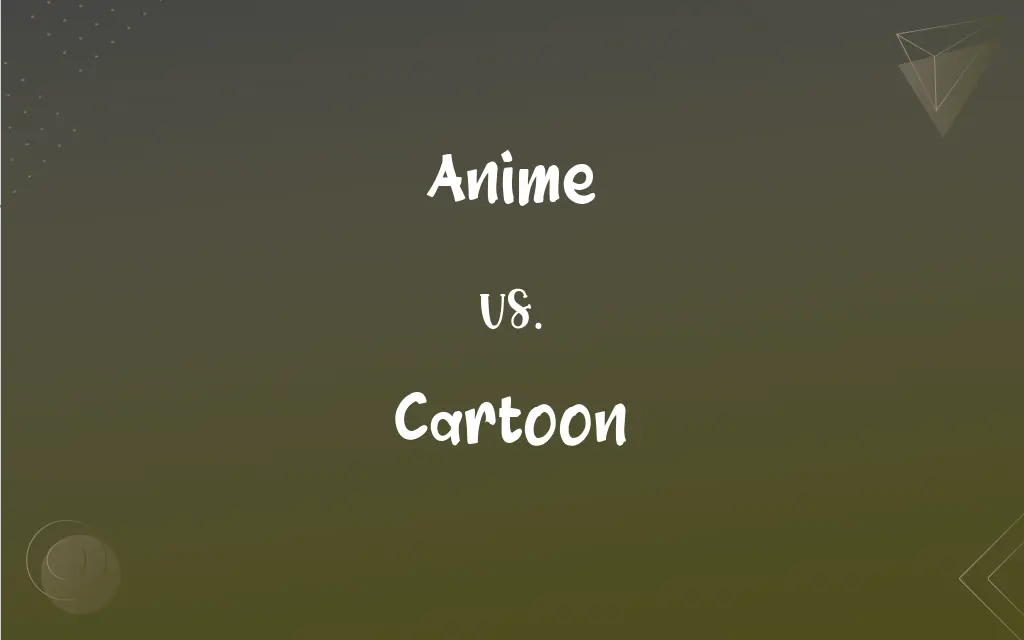
Key Differences
Anime, originating from Japan, often displays vibrant graphics, fantastical themes, and colorful characters. Cartoons, on the other hand, stem mostly from the Western world and are characteristically simplified and exaggerated for humorous or symbolic effects. The rich and varied culture of anime allows it to cover a plethora of genres and themes, catering to various age groups and demographics. Whereas cartoons are primarily targeted towards children, although some cater to adults, usually exploiting satire and humor.
In the realm of art style, anime is renowned for its meticulous detail, not only in character design but also in the background art and world-building aspects. This contrasts with cartoons that often employ a simpler, more straightforward art style, focusing on exaggerated features and expressions to emphasize humor or depict character traits. The divergence in visual approach is stark, with anime often employing a broad array of colors and shades to depict moods and establish themes. Cartoons might utilize a more stable and consistent color palette to maintain a uniform and recognizable look.
When exploring thematic depth, anime often dives into intricate, complex narratives, exploring various philosophical, psychological, and socio-political themes, and can sometimes be dark or profound. Cartoons tend to lean towards light-hearted, comedic narratives, prioritizing humor and moral stories, often with clear and simple messages intended especially for a younger audience. Anime can encapsulate an extensive narrative, with detailed character development and sequential plotting. Cartoons, while they can have overarching themes, generally maintain episodic formats with concise, self-contained stories.
Anime and cartoon, while both being forms of animated media, cater to their audiences in distinctly different ways through their unique approaches to storytelling, art style, thematic exploration, and character development. Anime has managed to permeate international borders, garnering global appreciation and fandom, while cartoons hold a nostalgic and significant space in the entertainment industry, providing light-hearted content across ages. Both mediums, while different in approach and style, have successfully captivated audiences worldwide.
Comparison Chart
Origin
Japan
Primarily Western
ADVERTISEMENT
Art Style
Detailed, vibrant
Simple, exaggerated
Target Audience
All age groups
Mostly children
Thematic Depth
Diverse, complex
Generally light, humorous
Global Reach
Extensive
Considerable but varied
Anime and Cartoon Definitions
Anime
Anime encompasses various genres and themes, often including fantastical elements and intricate plots.
The anime Death Note explores psychological and moral dilemmas through its intense plot.
ADVERTISEMENT
Cartoon
Cartoons often utilize exaggerated features and humorous elements to entertain and convey stories or messages.
The cartoon Looney Tunes showcases a series of comedic skits featuring iconic characters like Bugs Bunny and Daffy Duck.
Anime
Anime series may be adaptations of manga (Japanese comics), light novels, or video games, providing a visual rendition of pre-existing stories.
The anime Attack on Titan is adapted from a manga series and has achieved monumental success worldwide.
Cartoon
Cartoons can be short animated features or longer cinematic experiences, typically with each episode or short being self-contained.
The Flintstones cartoon provides a humorous take on prehistoric life in episodic formats.
Anime
Anime refers to hand-drawn or computer-generated animated works produced in Japan.
My Neighbor Totoro is a popular anime that has been cherished by generations.
Cartoon
Cartoons often serve as a medium to convey political or social messages through caricature and satire in newspapers and magazines.
The editorial section of the newspaper often features a cartoon that satirizes current political scenarios.
Anime
Anime often features vibrant, detailed art styles, with particular emphasis on emotive character expressions and dynamic scenes.
The anime Spirited Away is celebrated for its enchanting art style and imaginative world.
Cartoon
Cartoons may aim predominantly towards children but can also contain humor and themes that are appreciated by adults.
The cartoon SpongeBob SquarePants has garnered fans of all ages due to its quirky characters and universal humor.
Anime
Anime can target various age demographics, including children (kodomomuke), teenagers (shonen for boys, shojo for girls), and adults (seinen for men, josei for women).
Naruto is a shonen anime that has garnered a massive global following.
Cartoon
A cartoon is a type of illustration, possibly animated, typically in a non-realistic or semi-realistic style.
Tom and Jerry is a classic cartoon that has entertained audiences for decades.
Anime
A style of animation developed in Japan, characterized by stylized colorful art and often adult themes.
Cartoon
A drawing depicting a humorous situation, often accompanied by a caption.
Anime
(uncountable) An artistic style originating in, and associated with, Japanese animation, and that has also been adopted by a comparatively low number of animated works from other countries.
I can draw an anime version of you, if you want.
Cartoon
A drawing representing current public figures or issues symbolically and often satirically
A political cartoon.
FAQs
What defines a cartoon?
Cartoons are typically non-realistic or semi-realistic drawings or animations, often characterized by humor and exaggerated features.
Are anime characters always human?
No, anime can feature a range of characters, including animals, mythical creatures, and anthropomorphized entities.
Are anime characters stereotypically large-eyed?
While large eyes are a common trope in anime to convey emotion, anime encompasses various art styles and character designs.
What is anime?
Anime refers to animated works produced in Japan, known for their vibrant graphics and diverse themes.
Can cartoons tackle serious themes?
Yes, some cartoons address serious or mature themes, often through satire or symbolic storytelling, even though they're generally light-hearted.
Do cartoons only feature humor?
Although humor is prevalent, cartoons can also present drama, adventure, and varied themes, depending on the intended message or audience.
Why do cartoons often have exaggerated features?
Exaggerated features in cartoons help emphasize characteristics, emotions, and create a distinct, memorable visual style.
Can a cartoon be non-animated?
Yes, cartoons can be static illustrations, often found in newspapers and magazines to convey humor or political messages.
Are cartoons a western creation?
Cartoons, as understood in the modern sense, have roots in western culture but have been adopted and produced globally.
Why are cartoons important in media?
Cartoons provide entertainment, convey narratives, serve as social and political commentary, and can be educational.
Do cartoons have their own awards?
Yes, cartoons are acknowledged in various award platforms, such as the Annie Awards, recognizing excellence in animation.
Can anime and cartoons be considered art?
Yes, both anime and cartoons are recognized forms of artistic expression, admired for their creativity, visuals, and narratives.
Is the anime industry larger than the cartoon industry?
It's challenging to directly compare the two due to cultural and market differences, but both industries are substantial and impactful in their respective regions and globally.
Can anime be targeted towards adults?
Absolutely, there are numerous anime genres, like seinen and josei, specifically designed for adult audiences.
Is anime only produced in Japan?
While anime is a Japanese creation, some animations from other countries emulate the style, though purists often consider only Japanese productions true anime.
Why is anime popular globally?
Anime’s global popularity can be attributed to its diverse genres, deep narratives, unique art style, and emotional depth.
Is there crossover between anime and manga?
Yes, many anime are adaptations of manga, Japanese comics, and vice versa.
Do anime always have multiple episodes?
No, anime can be single-episode (OVA), series, or feature-length films.
What is an animated cartoon?
An animated cartoon involves moving characters created through sequential drawings or computer generation, to visually convey a story or message.
How do cartoons impact culture?
Cartoons impact culture by providing commentary, shaping societal norms and memories, and serving as entertainment and educational tools.
About Author
Written by
Harlon MossHarlon is a seasoned quality moderator and accomplished content writer for Difference Wiki. An alumnus of the prestigious University of California, he earned his degree in Computer Science. Leveraging his academic background, Harlon brings a meticulous and informed perspective to his work, ensuring content accuracy and excellence.
Edited by
Aimie CarlsonAimie Carlson, holding a master's degree in English literature, is a fervent English language enthusiast. She lends her writing talents to Difference Wiki, a prominent website that specializes in comparisons, offering readers insightful analyses that both captivate and inform.




